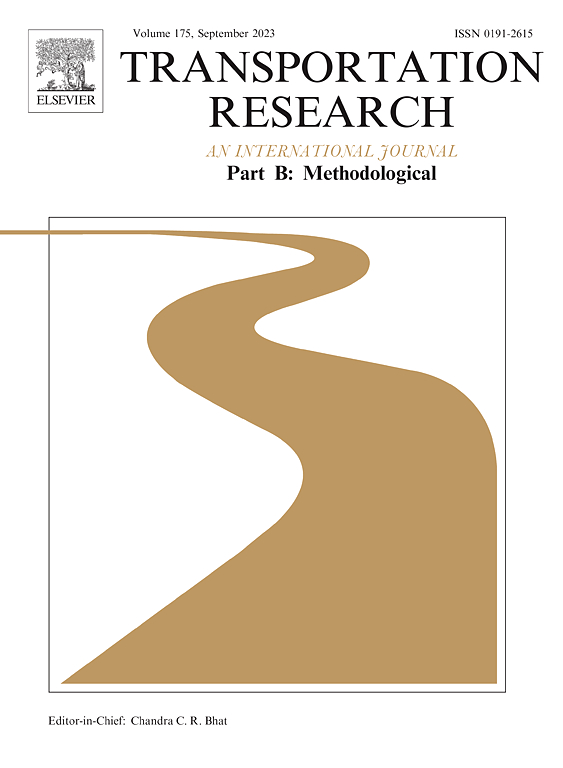Liner fleet deployment and slot allocation problem: A distributionally robust optimization model with joint chance constraints
IF 6.3
1区 工程技术
Q1 ECONOMICS
引用次数: 0
Abstract
In this paper, we address the classical liner fleet deployment and slot allocation joint optimization problem in the maritime field with uncertain container transportation demand. We relax the assumption in existing studies that the demand distribution function is known because container transportation demand is deeply affected by the world’s economic and political landscape. With the help of advances in distributionally robust optimization theory, we develop a two-stage data-driven robust chance-constrained model. This distribution-free model requires only limited historical demand data as input and jointly optimizes the class (i.e., capacity) and number of liners assigned on each route and the scheme for allocating containers on each leg to maximize the profit (container transportation revenue minus fleet operating costs, voyage costs, and capital costs) of the liner company. The joint chance constraint in the model requires that the transportation demand of the contract shipper be satisfied with a pre-determined probability. We then reformulate the model as a second-order cone programming and design a customized algorithm to explore the global optimal solution based on the outer approximation algorithm framework. This paper can serve as a baseline distribution-free model for solving liner fleet deployment and slot allocation joint optimization problems.
班轮机队部署与舱位分配问题:一个具有联合机会约束的分布鲁棒优化模型
本文研究了在集装箱运输需求不确定的情况下,海运领域经典的班轮机队调配与舱位分配联合优化问题。由于集装箱运输需求受到世界经济和政治格局的深刻影响,我们放宽了现有研究中需求分布函数已知的假设。借助分布鲁棒优化理论的进展,我们建立了一个两阶段数据驱动的鲁棒机会约束模型。这种无配送模式只需要有限的历史需求数据作为输入,共同优化每条航线上分配的班轮等级(即运力)和班轮数量,以及每条航线上的集装箱分配方案,使班轮公司的利润(集装箱运输收入减去船队运营成本、航次成本和资金成本)最大化。模型中的联合机会约束要求合同托运人的运输需求以预先确定的概率得到满足。然后,我们将模型重新表述为二阶锥规划,并设计了一个定制算法来探索基于外部逼近算法框架的全局最优解。本文可作为解决班轮机队调配和舱位分配联合优化问题的基线无分布模型。
本文章由计算机程序翻译,如有差异,请以英文原文为准。
求助全文
约1分钟内获得全文
求助全文
来源期刊
CiteScore
12.40
自引率
8.80%
发文量
143
审稿时长
14.1 weeks
期刊介绍:
Transportation Research: Part B publishes papers on all methodological aspects of the subject, particularly those that require mathematical analysis. The general theme of the journal is the development and solution of problems that are adequately motivated to deal with important aspects of the design and/or analysis of transportation systems. Areas covered include: traffic flow; design and analysis of transportation networks; control and scheduling; optimization; queuing theory; logistics; supply chains; development and application of statistical, econometric and mathematical models to address transportation problems; cost models; pricing and/or investment; traveler or shipper behavior; cost-benefit methodologies.

 求助内容:
求助内容: 应助结果提醒方式:
应助结果提醒方式:


